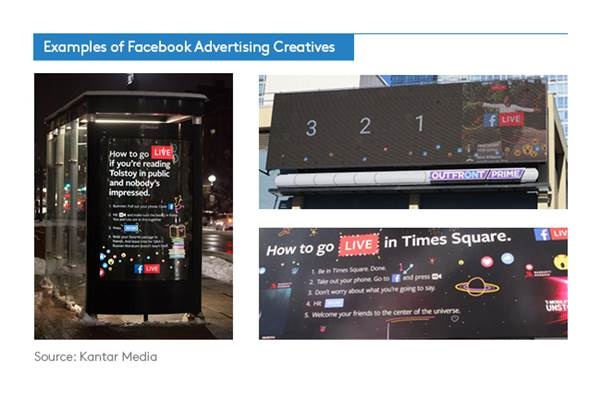A new study from Kantar Media study, looked at the ad spends of the five big social-media networks in the US, showing that Facebook dominates with Snapchat and Pinterest on the rise.
Kantar Media took a peek at the five big social channels in the U.S., and the $117.9 million they spent last year on marketing. Two of them stood well above the rest in expenditures and success. Guess who got the top spots …
Facebook has transcended its role as a mere social media network and is well on its way to huge conglomerate status. Meanwhile, LinkedIn came in second, thanks to a status injection of its own when it was acquired by Microsoft in 2016.
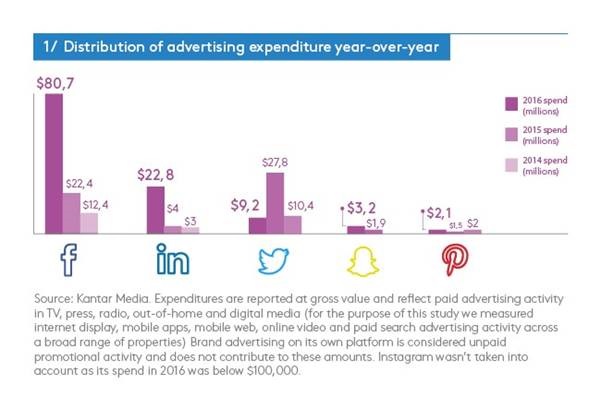
The figures show that Facebook’s recent climb, coincides with its massive escalation in advertising. Zuckerberg more than tripled such expenditures (up to $80 million) from 2015 to 2016. Over that same period, LinkedIn registered a massive 5-fold increase in advertising expenditures (up to $22 million).
Conversely, Twitter slashed its advertising budget by two-thirds for 2016. The social giant abandoned its television presence in favor of its stable (and cheaper) digital home turf.
Snapchat and Pinterest both ended the year with an uptick in spending. But they remained well below the budget levels of the leaders.
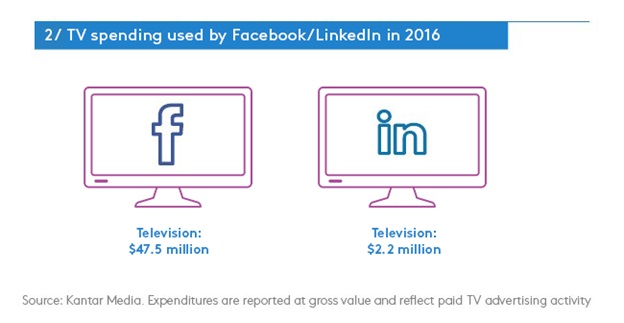
Facebook’s advertising choices paint a pretty clear picture of its brand goals. Its heavy use of TV reinforces the big brand feel of mass consumer products. It’s a strategy that fits nicely with Zuckerberg’s vision for Facebook – namely that it become as ubiquitous in people’s lives as electricity.
LinkedIn also took a stab at TV marketing in 2016. You could even call it a bit of a gamble. They invested 80% of their TV ad expenditures ($1.7 million) to feature just one ad during The Oscars. But that’s where Linkedin’s campaign diverged from Facebook’s.
While Facebook strove for blanket mass appeal, LinkedIn executed a targeted inspirational approach that featured an astronaut on a spacecraft, and the tagline, “You’re closer than you think.” It nicely illustrated how LinkedIn helped NASA to discover its next high-flying astronaut by delivering 3-million qualified candidates. It’s a vivid image of LinkedIn helping people to reach their potential.
Besides the main TV ad, LinkedIn focused its ad budget on display advertising in order to target specific audiences – for example, professionals in given sectors.
Facebook and LinkedIn demonstrate a simple case of two industry titans achieving brand goals with different strategies. One covets massive awareness, the other, a well-defined audience. And as things stand, they’re both getting exactly what they want
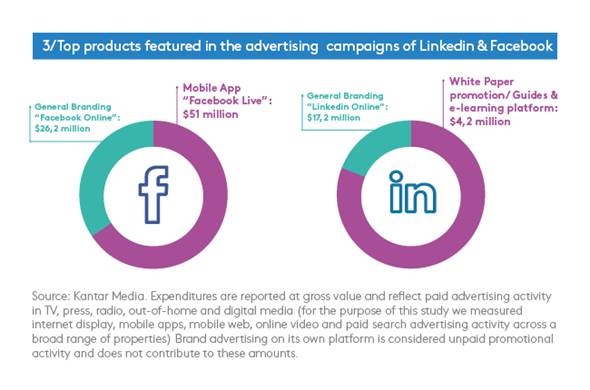
In addition to choosing different media for their advertising, Facebook and LinkedIn choose to highlight different aspects of their services as well. LinkedIn emphasizes the promotion of its general website/app/platform – LinkedIn online. While Facebook invests more on a specific product within its brand, most recently Facebook Live.
For this budding new video sharing service, Facebook has chosen to use television for the bulk of its advertising. TV delivers the perfect persuasive mass-communication medium to reach Live’s global audience. Such a financial commitment is a clear indication of Live’s importance to Facebook’s planned evolution.
In fact, Zuckerberg describes himself as “obsessed” with live video and its spectacular engagement numbers (10-times as many comments as standard videos). It’s a trend with exponential growth potential as TV moves online and onto social networks. There’s little doubt that video formats will soon dominate the web.
At the Most Powerful Women International Summit in London, Nicola Mendelson spoke on the issue of Facebook’s future. The VP indicated that Facebook would “definitely” be mobile in the future, and would likely evolve its format to be exclusively video.
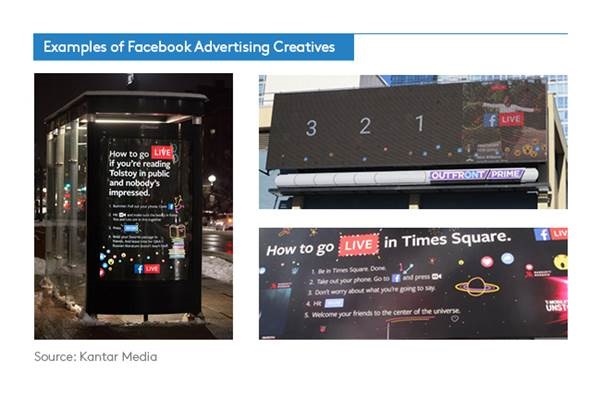
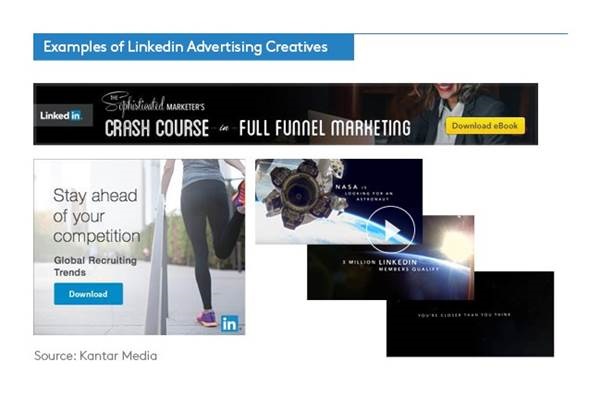
Meanwhile, LinkedIn is highlighting its e-learning solution in addition to providing white papers and practical guides to keep its communities informed and competent. This demonstrates its learning orientation and its commitment to becoming the go-to place for professional development.
Source: Kantar

